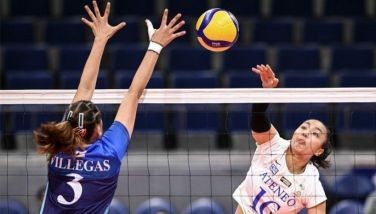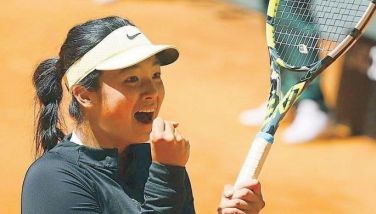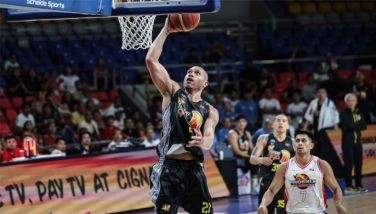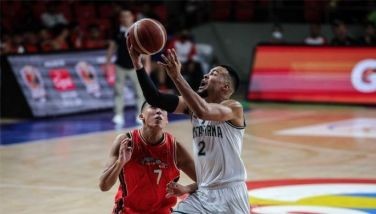How to fix Philippine sports

Last Sunday’s column tracked the evolution, if not the deterioration, of the Philippines’ participation at the Olympics since 2000, the Southeast Asian Games since 2005 and the Asian Games since 2006. The downtrend is disturbing. While Southeast Asian neighbors Thailand and Indonesia are racking up Olympic medals, the Philippines is struggling with a drought that dates back to Onyok Velasco’s silver in 1996.
Both Thailand and Indonesia made their Olympic debut in 1952 while the Philippines started back in 1924. The Philippines collected five of its nine Olympic medals (two silvers and seven bronzes) before 1952. Thailand has garnered 24 Olympic medals broken down into seven gold, six silver and 11 bronze in three sports – boxing (14), weightlifting (seven) and taekwondo (three). Indonesia has amassed 27 Olympic medals consisting of six gold, 10 silver and 11 bronze from three sports – badminton (18), weightlifting (eight) and archery (one).
The Philippines has never struck paydirt in 20 Olympic appearances. The harvest has been a paltry nine medals from three sports – boxing (five), athletics (two) and swimming (two). The medals in athletics came in 1932 (high jumper Simon Toribio) and in 1936 (400-meter hurdler Miguel White) while the medals in swimming came in 1928 and 1932 (both in 200-meter breaststroke from Teofilo Yldefonso). The last four Olympic medals were from boxing and came in 1964 (silver from Anthony Villanueva), 1988 (bronze from Leopoldo Serrantes), 1992 (bronze from Roel Velasco) and 1996 (silver from Onyok Velasco). The other boxing medal was a bronze from Cely Villanueva in 1932.
Thailand has found a mother lode in ladies weightlifting with seven Olympic medals, including three gold. Indonesia has done the same with eight Olympic medals in the sport. Because European and American women tend to dominate the higher divisions, Asians are left to clean up the lower weight categories. It’s something the Philippines has yet to discover and exploit. Obviously, Indonesia and Thailand are aware of the “secret.”
* * * *
There are five basic reasons why Philippine sports has retrogressed.
First is disunity. Turf wars are turning NSAs into virtual political battlefields at the athletes’ expense. The POC has taken an active hand in cleaning up the mess but the fixing is far from over. Government officials aren’t on the same page when it comes to promoting sports. A clear example is PAGCOR and PCSO ignoring the law to remit less than what is mandated to the PSC. Another example is how negotiations to acquire property for a new training center can’t seem to progress beyond the discussion stage.
The hope is the Duterte Administration will get both the public and private sectors on the same team in pushing for sports development. Choosing the next PSC leaders is critical because with over P1 Billion to be left in the coffers by PSC chairman Richie Garcia and possibly P5 Billion in back payments coming in from PAGCOR and PCSO if the Supreme Court rules in favor of former Rep. Yeng Guiao’s case, the government agency’s war chest will be filled to the brim. How to judiciously and effectively spend the money will be a challenge.
Former PSC chairman Butch Ramirez would be a logical choice to succeed Garcia since he has Duterte’s ear. But if Ramirez declines or is assigned elsewhere, it wouldn’t be a bad idea to retain Garcia who’s done a solid job at the helm. Besides, Garcia is close to POC president Jose Cojuangco Jr. and a cooperative relationship between the PSC and POC is critical in pushing Philippine sports forward.
Second is politics. It’s the reason why chess grandmaster Wesley So decided to compete for the US, not the Philippines. It’s the reason why officials linked to the World University Games don’t fall under the POC. It’s the reason why some worthy sports projects are turned down and some talented athletes are excluded from the national pool.
Third is poor infrastructure. The school system doesn’t prioritize sports with only five percent of elementary students playing a sport because the focus is on other areas like music and arts. LGUs use their sports budgets for political gain so instead of creating grassroots development programs, the money is used for basketball uniforms and town fiestas. Recruiting Fil-foreigners is the quick fix to loading the elite pool. Training facilities at the Rizal Memorial are far from being state-of-the-art as there is no finality in talks to build a national training center. Infrastructure doesn’t only mean buildings but also systems.
* * * *
Fourth is government doesn’t prioritize sports. Last year, the PSC’s budget was P800 Million. Thailand’s budget for sports was the equivalent of P8 Billion and Singapore, P2 Billion. While private sponsors support high-profile sports like boxing, basketball and taekwondo, other sports where the Philippines could excel on the global front are virtually ignored. If the government is serious about pushing sports as a source of national pride, it should create a Department of Sports with a cabinet-rank Secretary.
Fifth is lack of leadership. The POC and PSC can only do so much. It’s incumbent on the NSAs to get their act together. The POC and PSC will provide the vision and resources but the NSAs must come up with the programs, coaches and athletes to make things happen. Weightlifting, for example, is a sport which Thailand and Indonesia have mined to garner Olympic medals. But in the Philippine case, weightlifting is concentrated in Zamboanga because that’s where it has a history of local support. It’s no wonder that the country’s top weightlifters Hidilyn Diaz and Nestor Colonia are from Zamboanga. If that same leadership could be replicated for other sports in specific hubs, there will be progress for sure.
The solutions aren’t difficult to lay down. First, the government must put up a Department of Sports with the right leaders in place. This will set the direction for a planned approach to sports development from the grassroots to the elite level, unifying the objectives of the Palarong Pambansa, Batang Pinoy and Philippine National Games.
Second, the law must be followed in providing government support for sports. Third, the POC must continue to assert its leadership in fostering unity and promoting sports science with conviction, without political leanings. Fourth, authorities must finalize a timetable for the construction and opening of a national training center – no more delays, no more ifs and buts. And lastly, there must be a platform to harness public and private cooperation for sports development. If that means reviving the “godfather” system, then by all means, let’s do it.
- Latest
- Trending






























